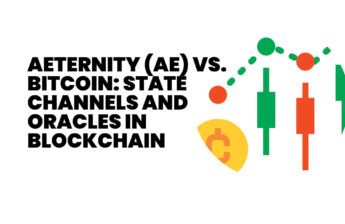The cryptocurrency market has been on an exponential rise, and within this burgeoning landscape, Ethereum stands out as a true pioneer. In this article, we will delve deep into Ethereum, exploring its origins, evolution, and the myriad possibilities it offers. Whether you’re a curious crypto enthusiast, a seasoned investor, or just someone intrigued by the world of blockchain technology, understanding Ethereum is crucial. If you’d like to learn more, consider checking out www.ethereum-eprex.com/ for additional insights.
Contents
Understanding Ethereum
History and Inception of Ethereum
Ethereum was conceptualized by a young programmer named Vitalik Buterin in 2013. In 2015, Ethereum’s genesis block was mined, marking the official beginning of this groundbreaking project. Unlike Bitcoin, which primarily serves as digital gold, Ethereum was designed with a broader vision in mind.
Key Differences Between Ethereum and Bitcoin
While Bitcoin is primarily a digital currency, Ethereum is a blockchain platform that enables developers to build decentralized applications (DApps) and smart contracts. These differences make Ethereum a versatile platform for a wide range of applications beyond simple peer-to-peer transactions.
The Ethereum Blockchain and Its Features
Smart Contracts
Smart contracts are self-executing agreements with the terms of the contract directly written into code. Ethereum’s blockchain allows for the deployment of smart contracts, automating and facilitating various transactions and processes across industries like finance, real estate, and supply chain management.
Decentralized Applications (DApps)
DApps are applications that run on blockchain networks, ensuring transparency, security, and censorship resistance. Ethereum has become a hub for DApps, fostering innovation in areas such as decentralized finance (DeFi), gaming, and social networking.
The Role of Ether (ETH) in the Ethereum Network
Ether (ETH) is Ethereum’s native cryptocurrency, fueling transactions and serving as a store of value within the network. ETH is used to pay transaction fees, incentivize miners, and participate in various DeFi protocols.
Ethereum’s Evolution
Ethereum 2.0: A Deep Dive into the Upgrade
Ethereum 2.0, also known as ETH2 or Serenity, is a significant upgrade aimed at improving the scalability, security, and sustainability of the Ethereum network.
Proof of Stake (PoS) Consensus Mechanism
Ethereum 2.0 replaces the energy-intensive Proof of Work (PoW) consensus with PoS, allowing users to stake their ETH as collateral and participate in network validation. This shift reduces energy consumption and enhances security.
Sharding for Scalability
Sharding involves splitting the Ethereum network into smaller shards, each capable of processing transactions and smart contracts independently. This parallel processing significantly improves scalability, enabling Ethereum to handle a higher throughput of transactions.
The Impact of Ethereum 2.0
Ethereum 2.0 promises a more efficient and eco-friendly network, making it more attractive to developers and investors. Enhanced scalability and security will further solidify Ethereum’s position as a leading blockchain platform.
Ongoing Developments and Future Upgrades
The Ethereum community is continuously working on upgrades and improvements. EIP-1559, for instance, aims to introduce a fee-burning mechanism, potentially making ETH a deflationary asset. Keep an eye on upcoming developments to stay ahead in the crypto space.
Unlocking the Power of Smart Contracts
What Are Smart Contracts and How Do They Work?
Smart contracts are self-executing contracts with predefined rules. They automatically execute when specific conditions are met, removing the need for intermediaries in various transactions.
Real-World Use Cases of Smart Contracts on Ethereum
Smart contracts are transforming industries like finance, supply chain management, and real estate.
Finance and DeFi: Ethereum-based smart contracts power decentralized lending, borrowing, and trading platforms, offering users more control over their assets.
Supply Chain Management: Ethereum’s blockchain can provide transparency and traceability in supply chains, reducing fraud and improving efficiency.
Healthcare: Smart contracts can streamline insurance claims processing and securely manage patient data.
Potential Industries Disrupted by Smart Contracts
The possibilities are vast, including legal, voting, and charity sectors. Ethereum’s smart contract capabilities are reshaping traditional systems across the board.
Risks and Challenges Associated with Smart Contracts
While smart contracts offer numerous benefits, they are not immune to bugs and vulnerabilities. Code audits, security best practices, and proper testing are essential to mitigate risks.
Exploring the World of Decentralized Applications (DApps)
What Are DApps and Their Importance in the Ethereum Ecosystem?
DApps are decentralized applications that operate on blockchain networks, providing users with transparency, security, and ownership of their data.
Popular Ethereum-Based DApps and Their Functionalities
Ethereum hosts a wide array of DApps, including decentralized exchanges (DEXs), gaming platforms, and NFT marketplaces. Each DApp serves a unique purpose and contributes to the growing ecosystem.
The Potential of Ethereum in Fostering Innovation and Development
Ethereum’s flexibility and developer-friendly environment have led to rapid innovation. The platform continues to inspire entrepreneurs to create disruptive solutions.
User Adoption and Challenges Faced by DApps
While DApps offer significant advantages, user adoption remains a challenge. Issues such as scalability and user experience need to be addressed for widespread adoption.
Ethereum Investment and Trading
Investing in Ether (ETH) as a Digital Asset
ETH serves as both a utility token and a store of value, making it an attractive asset for long-term investors.
How to Buy, Store, and Secure Ether
Investors can purchase ETH on various cryptocurrency exchanges, store it in secure wallets, and implement best practices for security.
Ethereum’s Role in the Growing World of Cryptocurrency Trading
ETH plays a crucial role in cryptocurrency trading pairs, providing liquidity and serving as a benchmark for the market.
Long-Term vs. Short-Term Investment Strategies
Investors should carefully consider their investment goals and risk tolerance when deciding between long-term holdings or short-term trading strategies.
Risks and Challenges
Security Concerns in the Ethereum Network
Ethereum’s growth also attracts malicious actors. Users must be vigilant against scams, phishing attacks, and vulnerabilities in smart contracts.
Regulatory Challenges and Their Impact on Ethereum
Ethereum’s regulatory status varies worldwide, posing legal challenges for users and developers.
Scalability Issues and Potential Solutions
Ethereum’s scalability challenges can lead to congestion and high transaction fees. Layer 2 solutions and ETH2 upgrades aim to address these issues.
Ethical Considerations in the Crypto Space
Crypto users and developers must navigate ethical questions surrounding decentralization, privacy, and social impact.
Conclusion
Ethereum’s journey from inception to Ethereum 2.0 has been marked by innovation, growth, and transformative potential. As you explore the world of Ethereum, remember that the blockchain space is ever-evolving, offering countless opportunities for those willing to engage with it. Embrace the possibilities, stay informed, and unleash your crypto potential with Ethereum. The future of finance and technology is here, and Ethereum is at the forefront.







